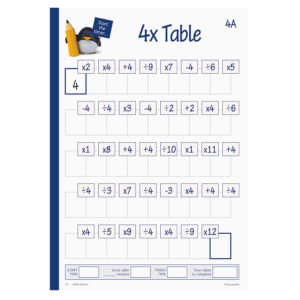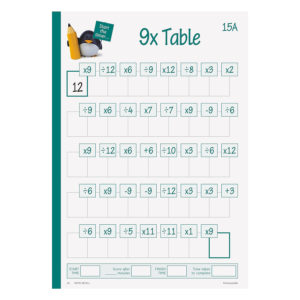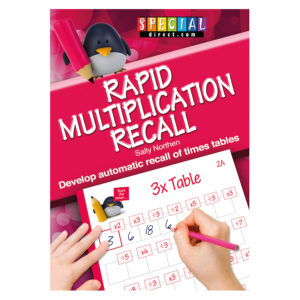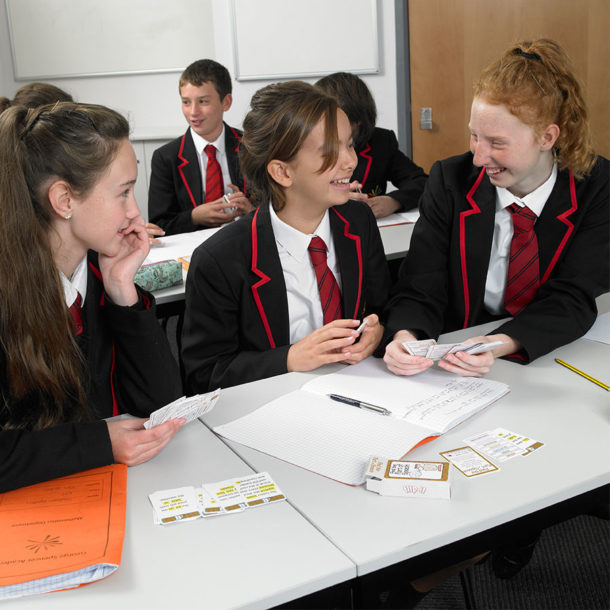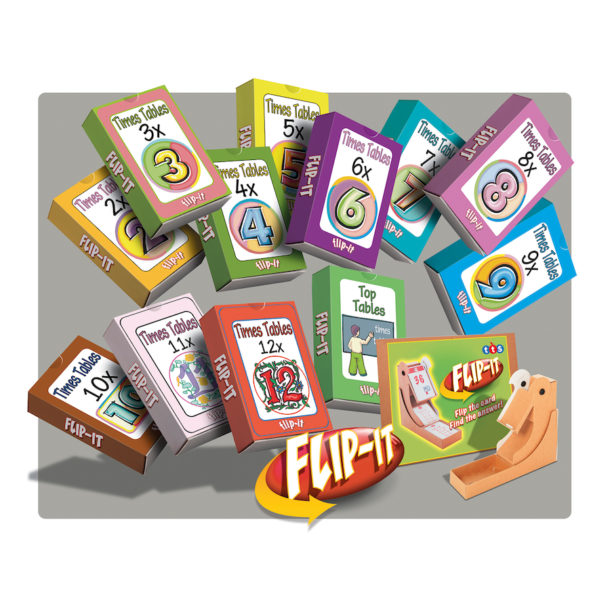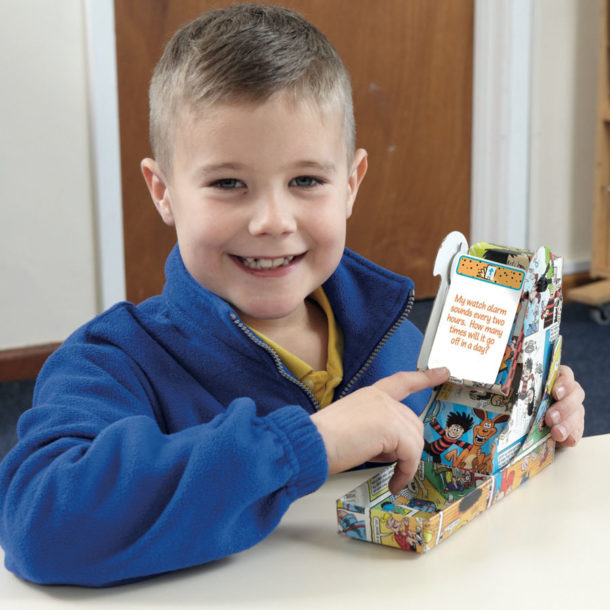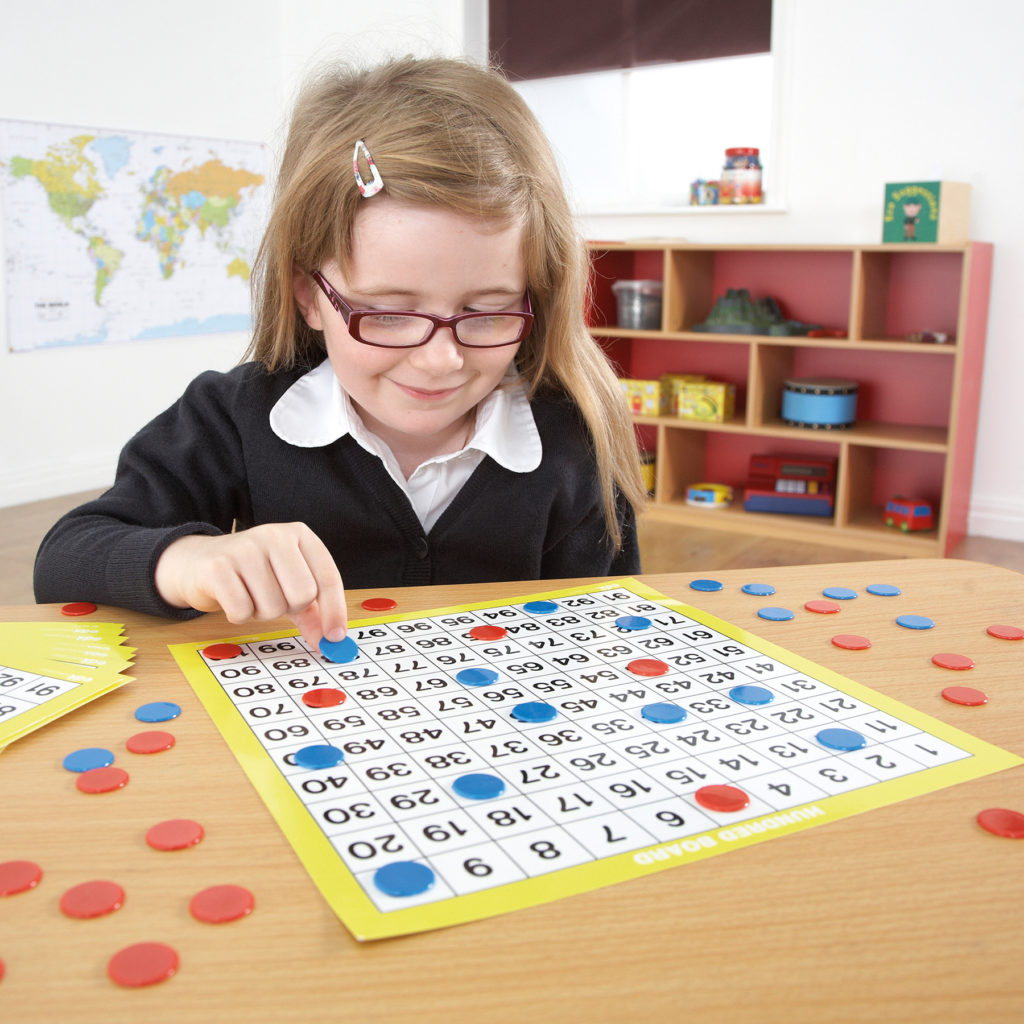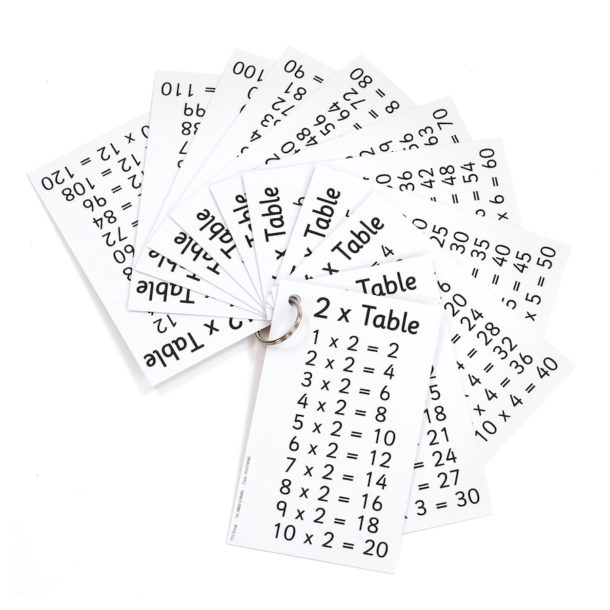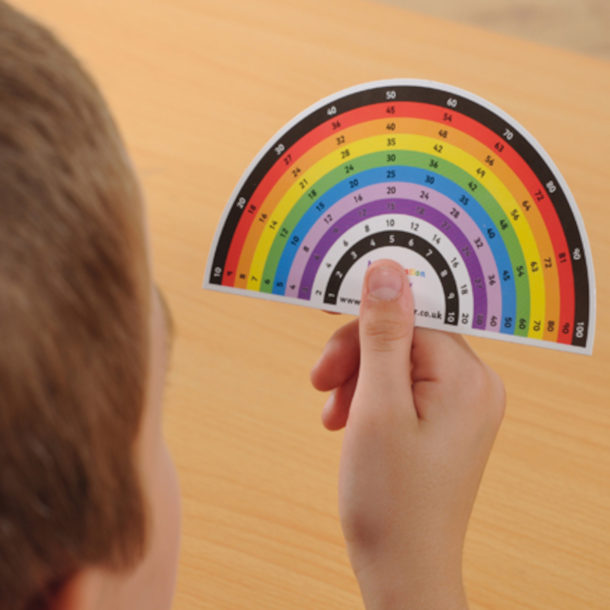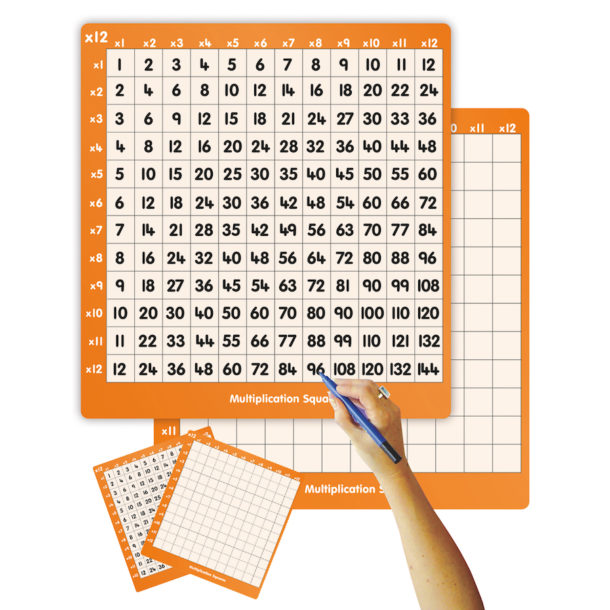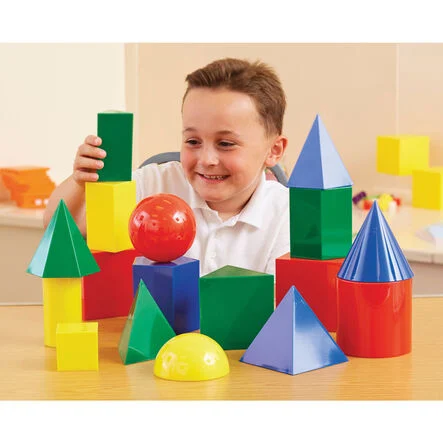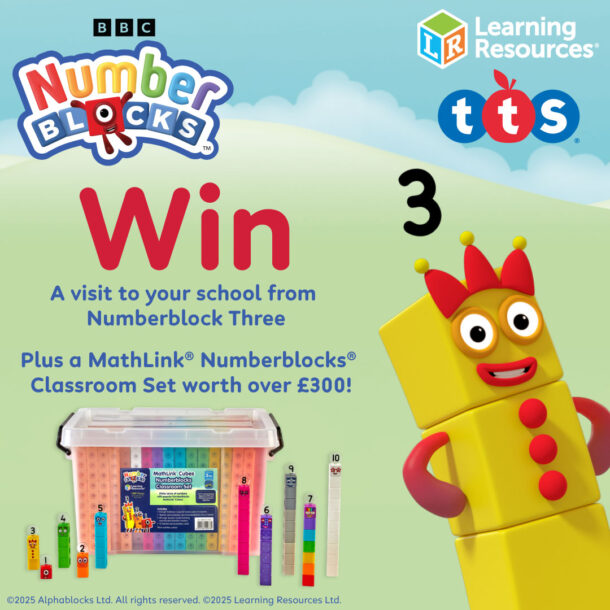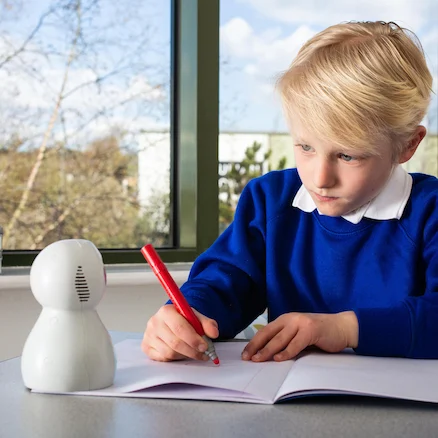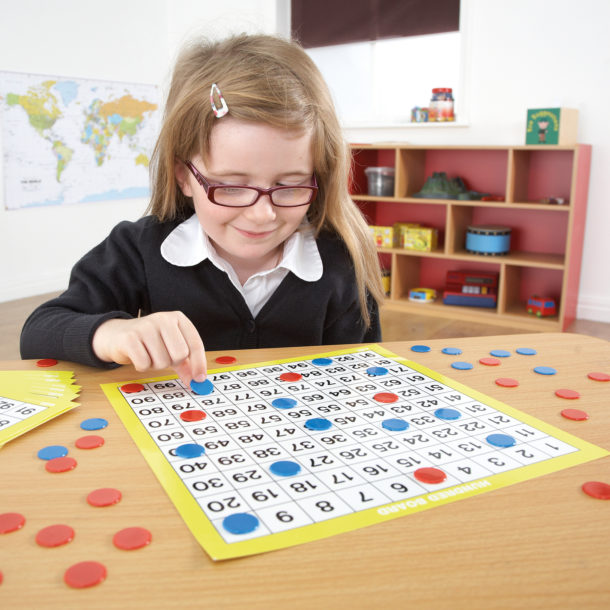Here are a few suggestions and resources that might help inject a slightly different slant, make learning fun and brighten-up the experience!
-
The Times Table Wheel
This times table wheel provides a new approach to learning tables and focuses the child upon all of the numbers up to ten times in one big circle. The set is divided up like pieces of a cake with coloured concentric circles separating out the multiples and making it easy to see them. Segments have the odd times-tables printed on a green background and the even times-tables on a blue background. A separate pink segment provides the multiple. Pieces are made from a tough foam with a magnetic backing for use on a whiteboard. Each segment can be lifted out of the circle by an individual child and studied or several pieces can be used by a small group working together. The whole circle can also be used by a group of children as a look-up game with a child calling out a question such as, ‘What is 4 times 4?’ and other children seeing who can call out the correct answer first.
-
Rapid Multiplication Recall by Sally Northern
This photocopiable book is a great tool. It is incredibly clear and simple and looks friendly (with a penguin motif on each page). Every page includes division so that understanding of the inverse is built in.
- Children keep their own scores and can challenge themselves to better them.
- It is very easily differentiated to suit different levels.
-
Origami cootie-catchers/fortune-tellers
Children love making these and they will even want to practise tables at play time! If you have forgotten how to make them, download a template here. Children choose 4 numbers for the top layer (depending on which tables they need to practise) then add numbers 2 – 9 to the second layer. On the very inside they can either write the possible answers and/or a positive message for when the correct answer is given, e.g. ‘You are a times-table wizard!’ or ‘You are a star!’ etc.
-
Flip-It cards
These cards are ideal for self-checking and confidence boosting. Young children will think it is magic! The Flip-It can be customised and decorated, which means children can make it personal and appealing to themselves. Cards are available for the 2 to 12 times tables.
-
Singing or rapping
There are many CDs available, and Singing Times tables is a good way to help children recall the times table facts.
-
Use FREE APPs
There are many available at well-known sites such as:
- www.maths-games.org/times-tables-games.html
- www.topmarks.co.uk/maths-games/7-11-years/times-tables
- www.topmarks.co.uk/maths-games/5-7-years/times-tables
- www.transum.org/Tables
-
Back-to Back game
Choose two children to stand up back-to-back. Either the teacher or another pupil shouts out a times table question. The first of the two children to answer stays where they are and the other person sits down. A new volunteer then stands back-to-back with the champion and so it continues!
-
Patterns on 100 squares
Using 100 squares, investigate patterns made by different times tables. Show different patterns without numbers. Can children say which tables they represent? Try finding patterns on different sized squares, such as 6 x 6, 7 x 7 etc. Read our 100 top 100 square activity article here.
-
Take it outdoors
Go on a Treasure Hunt. Choose a table you want to practise (for example the 6s)…
Place 10 envelopes in different positions in your outdoor area. On each envelope is the answer to a times table and inside is the clue to the next. Begin by finding the envelope showing the number 6.
Inside it may say 5 x 6, so next they have to find the envelope showing 30. The final envelope may contain stickers as a reward, or perhaps a clue to somewhere else to find a different reward or activity.
Times tables keyrings are handy to keep in drawers for filling space at the end of a lesson when children finish early. 12×12 Multiplication Squares – printed with the tables on one side and blank on the other, ideal for front of class and group activities.
With thanks to Beverley Smalley for writing this blog. Beverley is an education specialist, writer and former primary school teacher.
Read more about introducing Singapore Maths to your classroom here.
Unlock the power of Bar Modelling with this insightful article here.
Read more about teaching for Mastery here.
Free downloads, Fraction Action and Maths Mastery – read more here.

